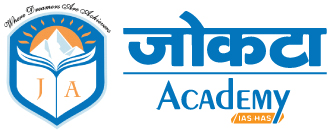Himachal Pradesh Declared Fully Literate: What It Really Means
Earlier this week, Himachal Pradesh was declared to be a ‘fully literate’ state, joining Goa, Ladakh, Mizoram, and Tripura as the fifth State/Union Territory in India to achieve this status. But what exactly does ‘fully literate’ mean? Does it imply 100% literacy? Not quite.
What Does ‘Fully Literate’ Mean?
The Ministry of Education defines literacy as:
“The ability to read, write, and compute with comprehension, i.e., to identify, understand, interpret and create, along with critical life skills such as digital literacy, financial literacy, etc.”
In August 2023, the Ministry clarified that ‘full literacy’ means achieving 95% literacy in a State/UT. Therefore, a state does not need to reach 100% to earn the fully literate tag.
- Himachal Pradesh now claims a literacy rate of 99.3%.
- Goa: 99.72%
- Mizoram: 98.2%
- Tripura: 95.6%
- Ladakh: 97%
This classification is crucial for implementing the ULLAS (Understanding Lifelong Learning for All in Society) program, launched in 2022 to promote adult education and ensure 100% literacy by 2030 — one of the UN’s Sustainable Development Goals (SDGs).
The ULLAS Programme: How Literacy Is Achieved
The ULLAS program is targeted at adults aged 15 years and above who may have missed formal schooling. Its aim is to provide them with foundational literacy and numeracy skills.
Skills Covered:
- Reading, writing, and basic arithmetic (up to Class 3 level)
- Reading and measuring time, understanding calendars
- Using currency notes and writing cheques
- Conducting safe digital transactions
- Financial literacy and digital literacy basics
Training Methods:
- Through a mobile app
- Offline learning, provided by students or community volunteers
Certification Process:
- Learners undergo the Functional Literacy Numeracy Assessment Test (FLNAT), a 150-mark exam in their chosen language.
- On passing, they are certified by the National Institute of Open Schooling (NIOS) as literate.
How Do States Become ‘Fully Literate’?
States conduct door-to-door surveys or use existing data to identify non-literate individuals. These individuals are given training under ULLAS and then tested through FLNAT.
Once the identified learners pass the test, the state can claim to have achieved full literacy (≥95%).
This process is relatively faster in states where:
- Literacy levels were already high as per the 2011 Census.
- The population is smaller and easier to survey.
Census 2011 Data (Literacy Rate):
- Goa: 88.7%
- Himachal Pradesh: 82.8%
- Mizoram: 91.3%
- Tripura: 87.2%
- India (overall): 74%
Clearly, these states already had strong literacy foundations, making it easier to reach near-total literacy levels under ULLAS.
Measuring Literacy in India: Then and Now
Census Definition (2011):
A person aged seven and above who can read and write with understanding in any language is considered literate.
- Overall literacy (2011): 74%
- Male literacy: 80.9%
- Female literacy: 64.6%
- Adult literacy (15+ years): 69.3%
National Sample Survey (NSS) 71st Round (2014):
- National adult literacy rate: 71%
- Goa: 90%
- Himachal Pradesh: 83%
- Mizoram: 96%
- Tripura: 86%
Periodic Labour Force Survey (PLFS) 2023-24:
- National literacy rate (7+ years): 77.5%
- Tripura: 93.7%
- Mizoram: 98.2%
- Goa: 93.6%
- Himachal Pradesh: 88.8%
The PLFS also revealed that 22.3% of Indians aged 15+ are still not literate.
- Lowest illiteracy: Mizoram (2.2%)
- Goa: 7.3%
- Tripura: 7.4%
- Himachal Pradesh: 12.7%
- Highest illiteracy: Bihar (33.1%), Andhra Pradesh (31.5%), Madhya Pradesh (28.9%)
Why the ‘Fully Literate’ Tag Matters
Being declared fully literate is not just symbolic; it has deeper implications:
- Alignment with SDGs: India is working towards the UN’s goal of 100% literacy by 2030.
- Policy Implementation: States with full literacy can focus on quality education, skill development, and digital literacy.
- Empowerment: Adult education improves financial independence, civic participation, and access to government schemes.
- Economic Growth: Higher literacy correlates with higher workforce productivity and better socio-economic indicators.
Challenges That Remain
Even with high literacy, quality of education is a concern:
- Literacy ≠ Employability — many literate people still lack job-ready skills.
- Tribal belts like Lahaul-Spiti, Kinnaur, and Pangi continue to face accessibility challenges.
- Adult learners may have functional literacy but limited digital fluency.
Impact on Economy & Society
- Literate citizens are more likely to use healthcare services, government schemes, and banking facilities.
- Literacy boosts tourism management, agriculture practices, and women’s empowerment in Himachal.
- Himachal already ranks high on Human Development Index (HDI), thanks in part to its literacy success.
Future Outlook
Achieving full literacy is just the beginning. The next phase is about:
- Skill literacy — vocational training and employable skills.
- Digital literacy — safe digital transactions, online governance, e-learning.
- Financial literacy — managing savings, loans, insurance.
This aligns with NEP 2020, which emphasizes adult education and lifelong learning.
Conclusion
Himachal Pradesh’s declaration as a ‘fully literate’ state does not mean 100% literacy. Instead, it signifies that the state has surpassed the 95% literacy benchmark set by the Ministry of Education.
Through the ULLAS program, thousands of adults in Himachal have acquired basic reading, writing, numeracy, and digital skills. This achievement reflects the state’s strong literacy foundation and its commitment to inclusive education, placing Himachal Pradesh among India’s leading states in literacy advancement.
As India moves toward the 2030 goal of complete literacy, Himachal’s success story offers a model of how community participation, digital tools, and policy support can transform education at the grassroots level.

